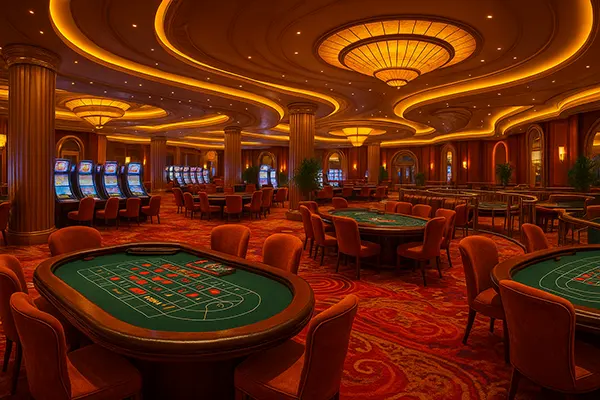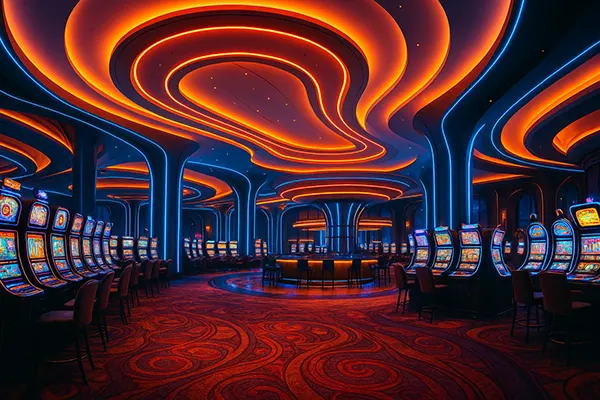
Architecture of Casinos as the Art of Temptation: How Design Influences Players’ Emotions
Casinos have long been more than venues for gambling; they are masterpieces of emotional engineering. Every corridor, colour, and light source is meticulously designed to evoke excitement, curiosity, and comfort. In 2025, architects continue to merge psychology with aesthetics to create immersive environments that influence how people feel, behave, and even how long they stay inside.
The Role of Colour in Creating Emotional Engagement
Colour is one of the most powerful design tools in casino architecture. Warm hues such as red, gold, and orange stimulate excitement and encourage play, while cooler tones like deep blue or emerald green promote relaxation. These combinations help create an atmosphere where thrill and comfort coexist harmoniously.
Modern casinos often use dynamic lighting systems capable of shifting hues throughout the day. For example, during daytime hours, designers opt for vibrant tones that energise visitors, while in the evening, softer palettes create intimacy and elegance. This adaptability makes every visit feel distinct and emotionally tuned.
By 2025, artificial intelligence plays a key role in colour management. Smart sensors can detect crowd density and emotional energy, automatically adjusting colour temperatures to maintain the desired level of stimulation and calmness, ensuring a balanced psychological environment.
Light as a Conductor of Mood and Focus
Lighting in casinos serves multiple psychological functions. It directs attention, establishes rhythm, and helps maintain energy levels. Early designs relied on bright artificial lights to obscure time perception, but today’s approach favours layered illumination that enhances both focus and well-being.
Architects now use programmable LED systems that simulate natural daylight cycles, reducing fatigue and promoting a healthy circadian rhythm. This innovation not only enhances comfort but also increases the length of stay without exhausting players mentally.
Eco-conscious casinos in 2025 increasingly integrate energy-efficient lighting technologies. These not only save power but also allow for fine-tuned control over intensity, colour, and warmth, aligning with global sustainability trends.
Spatial Design: Guiding the Emotional Journey
The spatial arrangement of a casino is never random; it is designed to subtly guide movement and emotion. Open layouts with curved pathways lead visitors naturally from one area to another, avoiding abrupt transitions and sustaining curiosity. The positioning of bars, lounges, and gaming tables is calculated to maintain visual and emotional flow.
Architects create transitions between high-stimulation zones and areas for rest. Gaming sections, filled with vivid activity, are balanced by quieter lounges where guests can relax and reset. This rhythm prevents sensory overload while maintaining engagement.
Contemporary design also embraces transparency and openness. Panoramic ceilings, natural light integration, and indoor gardens replace the closed, maze-like structures of the past. This openness promotes a sense of freedom and trust, making visitors feel at ease within the luxurious environment.
Acoustics and Sensory Harmony
Sound design is another critical yet often invisible aspect of casino architecture. Music and ambient noise levels are tailored to influence mood — upbeat rhythms in gaming zones boost energy, while softer sounds in rest areas promote calmness and conversation.
In 2025, acoustic zoning is used to ensure each space has its distinct emotional tone. Materials such as velvet panels, soft carpets, and wood surfaces absorb unwanted echoes, creating warmth and intimacy. Even the subtle clinking of chips or the spinning of a roulette wheel is engineered to sound satisfying rather than chaotic.
Through sound, designers establish a cohesive sensory narrative — one that keeps guests mentally alert, emotionally stable, and subtly motivated to stay longer.

The Future of Casino Architecture: Human-Centred and Technological
As design evolves, the goal is not manipulation but meaningful engagement. Casinos are transforming into immersive environments that prioritise emotional well-being alongside entertainment. Technology now acts as a bridge between architecture and psychology, with AI monitoring visitor comfort and adapting spatial conditions accordingly.
Architects collaborate with behavioural scientists and artists to design venues that stimulate yet soothe — blending visual richness with genuine comfort. Natural materials, sustainable structures, and biophilic elements like water features and greenery foster emotional balance, reducing the stress often associated with high-stakes environments.
Ultimately, the casino of 2025 is an ecosystem of design intelligence. Every colour, beam of light, and curve of space works in concert to create not just excitement but a refined artistic experience that appeals to both human senses and emotions.
Integration of Art and Technology
Art has become inseparable from architectural innovation. Many casinos now feature interactive installations and digital projections that evolve in real time, creating ever-changing visual landscapes. This fusion turns the building itself into a living artwork, constantly reshaping its atmosphere.
Augmented reality and projection mapping enhance this dynamic experience, allowing walls, ceilings, and even floors to transform with light and motion. The result is a visually fluid environment where art serves as both decoration and emotional catalyst.
In 2025, casino architecture stands as a form of experiential art — an intersection of technology, emotion, and creativity, where design truly becomes the art of temptation.
